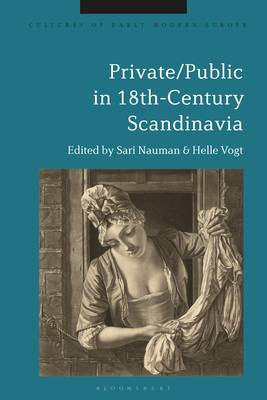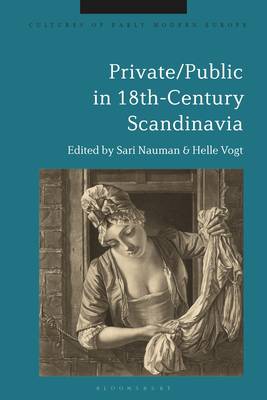
- Retrait gratuit dans votre magasin Club
- 7.000.000 titres dans notre catalogue
- Payer en toute sécurité
- Toujours un magasin près de chez vous
- Retrait gratuit dans votre magasin Club
- 7.000.0000 titres dans notre catalogue
- Payer en toute sécurité
- Toujours un magasin près de chez vous
Private/Public in 18th-Century Scandinavia
67,95 €
+ 135 points
Description
This open access book looks at how, in the 17th and 18th centuries, a new loanword 'private' came into the Nordic languages. It had very little to do with the way we define the word today. Still, the introduction of it contributed to an emerging discourse that clearly distinguished between the public - usually identified with the state - and its opposite.
Private/Public in 18th-Century Scandinavia includes ten case studies analysed by leading Swedish and Danish researchers in the fields of history, law, archaeology, and theology. It considers whether the modern sense of the word 'private' can be found in material from the period. The questions are approached through a multitude of different sources, including parliamentary-records, letters, newspapers, architectural drawings, archaeological findings, records of probate courts, legislation, and court cases. The volume starts from the assumption that the private and the public neither were, nor are, fully separated, but instead continuously work in relation to each other. To study the private, it argues, we are compelled to pay special attention to the public and how private and public interacted.
Privacy and protection of privacy remains of great topical interest and this book contributes to the present-day debate by examining neglected aspects of the history of the private before these concepts gained their modern meaning. In addition to investigating the history of these concepts in Scandinavia, the text offers a general theoretical reflection about what private was and is.
The open access edition of this book is available under a CC BY-NC-ND 4.0 license on www.bloomsburycollections.com. Open access was funded by The Centre for Privacy Studies, University of Copenhagen.
Private/Public in 18th-Century Scandinavia includes ten case studies analysed by leading Swedish and Danish researchers in the fields of history, law, archaeology, and theology. It considers whether the modern sense of the word 'private' can be found in material from the period. The questions are approached through a multitude of different sources, including parliamentary-records, letters, newspapers, architectural drawings, archaeological findings, records of probate courts, legislation, and court cases. The volume starts from the assumption that the private and the public neither were, nor are, fully separated, but instead continuously work in relation to each other. To study the private, it argues, we are compelled to pay special attention to the public and how private and public interacted.
Privacy and protection of privacy remains of great topical interest and this book contributes to the present-day debate by examining neglected aspects of the history of the private before these concepts gained their modern meaning. In addition to investigating the history of these concepts in Scandinavia, the text offers a general theoretical reflection about what private was and is.
The open access edition of this book is available under a CC BY-NC-ND 4.0 license on www.bloomsburycollections.com. Open access was funded by The Centre for Privacy Studies, University of Copenhagen.
Spécifications
Parties prenantes
- Editeur:
Contenu
- Nombre de pages :
- 268
- Langue:
- Anglais
- Collection :
Caractéristiques
- EAN:
- 9781350224933
- Date de parution :
- 27-07-23
- Format:
- Livre broché
- Format numérique:
- Trade paperback (VS)
- Dimensions :
- 156 mm x 234 mm
- Poids :
- 381 g

Les avis
Nous publions uniquement les avis qui respectent les conditions requises. Consultez nos conditions pour les avis.





